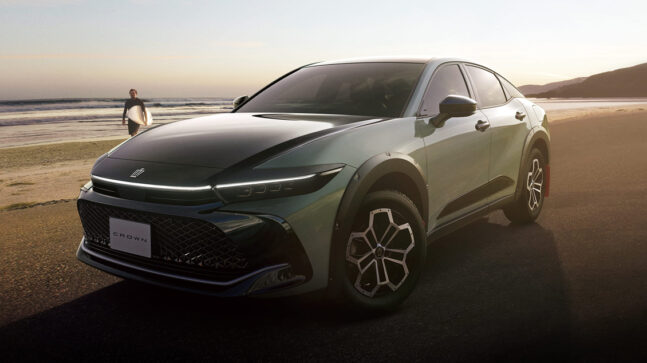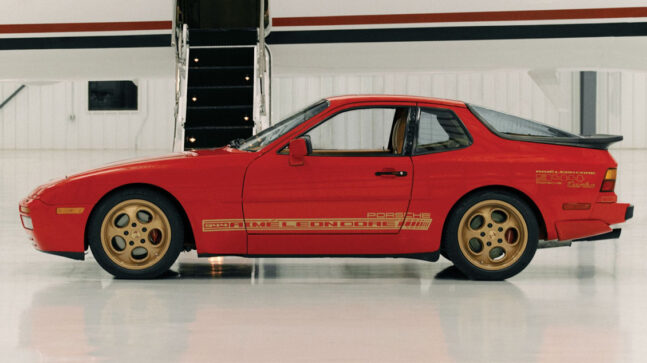Americans are a very specific breed of driver, and it’s not all good. We like to hog the passing lane when we’re not passing. We love gigantic, high-riding pickup trucks and SUVs, we can’t parallel park, and the hell with roping our own gears with a manual transmission. Tack on the rampant road rage and daily intentional violation of traffic laws, and you have yourself a recipe for disaster. When compared to drivers in many European countries, we fall short.
Generally speaking, Americans are not known for having good driving skills. These are not things we’re proud of. How on earth did we ever get this way? I’ve driven in numerous European countries: France, Germany, Sweden, the UK, and most recently, Portugal. Pretty much each and every driving experience was significantly safer and more fun than my daily commute to and from the office in the Chicago area (there are exceptions, of course). Americans are prone to the need for immediate gratification, personal recognition, and supposed rights, as well as a disdain for authority, and that’s all evident in the driving. The lack of driving skills is commensurate with that mindset, and our requirements to obtain a driver’s license are woefully shallow.
We also tend to purchase vehicles that hamper our ability to drive well, and when you take a look at them it all seems quite counterintuitive. SUVs and pickup trucks tend to have longer stopping distances than cars because of their increased size and weight. SUVs also tend to do more damage to other vehicles when they’re in a crash. Smaller cars are also easier to maneuver, and the lower center of gravity means there’s far less chance of a rollover in an accident.

What Type of Vehicles do Americans Buy?
You can tell what kind of vehicles Americans prefer just by looking on the streets where you live and work, and the sales statistics back that up. Granted, the choices vary depending on the region, but pickup trucks and SUVs make up the top spots while sedans, hatchbacks, and station wagons are on the wane and have been so for the past several years. In 2023, the best-selling vehicles in Europe have overwhelmingly been hatchbacks and small crossovers.
SUVs and pickup trucks have a higher center of gravity, thereby possessing more challenging driving dynamics. Not to mention, they’re just big which makes them a spatial challenge. Smaller vehicles are generally easier to drive because they tend to handle better due to being situated lower, and their size makes them more manageable. But Americans want size. They want to be able to see over other vehicles (thereby blocking the vision of drivers in smaller vehicles).
In Europe, cars are smaller because roads and streets are narrower, and parking spaces are not nearly as plentiful in urban areas as they are in American towns and cities. Granted, sales of larger vehicles have been increasing in Europe for the past decade, but those numbers still pale in comparison to the U.S. To boot, most Europeans still drive manual transmission equipped vehicles. Many countries’ driver’s education programs teach students using manual transmission cars because of their preponderance and because it’s easier to transition from knowing how to drive a manual transmission to an automatic. This training also helps to perpetuate the use of manual transmissions.
American drivers overwhelmingly prefer automatic transmission over manual. If you’re roping your own gears, you have to pay quite a bit more attention than if you’re driving an automatic. Your awareness of both your own speed and your surroundings has to occur at a higher level than if you’re driving a vehicle with an automatic transmission. There are only 30 different models available with a manual sold in America. In 2018, a mere five years ago, there were 76. Even performance-minded manufacturer BMW has dropped manual transmissions from their vehicles, all except for their top-tier M sports cars. Audi and Mercedes don’t even make vehicles with manual transmissions for the American market anymore.
For example, on my recent trip to Portugal, I took note of both the types of vehicles that were driven, as well as the skill level. First of all, the overwhelming majority of car owners drive smaller vehicles with manual transmissions. Automatics are pricier, so manuals are prevalent and it’s just part of European culture. I walked down a city street in Portugal and counted 19 out of 23 cars with manual transmissions. In America, you’re unlikely to find a single one on a city street these days. The impending death of the manual transmission car here combined with the prevalence of distracting in-car technology points to far less attention paid on our streets and roadways. These are not trends but realities that are unlikely to change anytime soon.

Why are Americans So Bad at Driving?
In a recent study by insurance experts at Compare The Market, several factors were used to measure the best and worst drivers across the globe. Aspects such as blood alcohol allowance limits, roadway quality, and the number of deaths based on traffic accidents all played a role. The rankings were not surprising. Eight of the top 10 spots for Best Drivers were in Europe (The Netherlands, Norway, Estonia, Sweden, Austria, Switzerland, Spain, and Portugal). On the flipside, the United States ranked number seven among the worst drivers in the world.
The Insurance Institute for Highway Safety (IIHS) reported that the number of deaths resulting from car accidents is much higher in America than in Europe. The U.S. has no fewer than 10 states where 160 or more deaths per million people annually, whereas the EU has five nations where fewer than 40 deaths per million occurs annually. Only nine American states can claim fewer than 80 deaths per million annually. Sure, Americans drive more, and our culture is strongly tied to the automobile, but the contrasts are stark. But you don’t have to read the statistics to understand how bad we are at driving, as well as our extreme vehicle choices.
So, what accounts for these harrowing statistics? Our driver’s education system is lacking when compared to many European countries. In general, you just have to pass a basic driving skills test, a written exam, and a vision test to obtain a driver’s license in America. In Germany, by contrast, it’s significantly more difficult to get a standard adult drivers license, as well as more expensive (to the tune of $1,800). It can take as much as six months to get through the process because it’s more stringent. Some states require as little as six hours of driver’s education classes while Germany requires as much as 14 hours of classroom and 12 hours of time behind the wheel before allowing drivers to apply for a license. In the United States in 2023, only 37 out of 50 states have a mandatory driver’s education program for high schoolers. Furthermore, in most European countries, 18 years of age is the minimum legal driving age, whereas it’s 16 or even 14 years old in some American states.
To worsen matters, Americans have a penchant for employing bad driving habits such as rubbernecking, texting, hogging the passing lane, and the resultant passing on the right side. Texting and passing on the right side is actually illegal in most, if not all states, but at least the latter pretty much never results in a citation for a moving violation. When I drove on the Autobahn in Germany for a manufacturer press trip with Mercedes-Benz, I attempted to pass a slow moving driver from the right side, and I was immediately scolded by the brand rep sitting next to me. “Never do that here! The police will give you a ticket!” I was shocked into immediate submission. Statistics actually show that drivers hogging the left lane which leads to passing said driver on the right causes thousands of accidents a year.
Two significant reasons why there are more accidents in America are the prevalence of stop signs and intersections. While that doesn’t seem to make sense, let’s take a look at why these are problem areas on streets and roadways. Intersections have a minimum of two separate paths of traffic, typically coming at each other from opposite directions, and then there’s also traffic turning in front of oncoming traffic. Stop signs further confuse matters because many drivers don’t observe stop signs or miss them altogether. The whole right of way order also contributes to accidents.
In many European countries, there are roundabouts instead of intersections. Drivers already in the roundabout have the right of way, while those drivers entering must yield. It’s typically a very balletic experience and things move very smoothly. Americans are, unfortunately, confused by the roundabout because there are just so few of them here. Statistically, roundabouts result in far fewer accidents because there are no traffic lights to blow, and everyone is moving in the same direction. What’s more, a missed exit on a roundabout can be remedied by a quick turn around at the next roundabout. The good news for us is that more American states are building modern roundabouts, including California, Colorado, Florida, Maryland, Nevada, and Vermont. Let’s hope it’s a trend that continues to grow.
The bottom line is that we have a lot to learn from our fellow European drivers. If you happen to be in Europe, namely those eight top-ranking countries, observe the how the drivers operate, as well as the vehicles they drive. Use the left lane for passing only, don’t pass on the right, don’t use your phone, and leave plenty of following distance, at the very least. While it’s unlikely you’ll go out an purchase a manual transmission vehicle or sign up for a performance driving school, you can be a better driver if you start driving like a European instead of an American.





